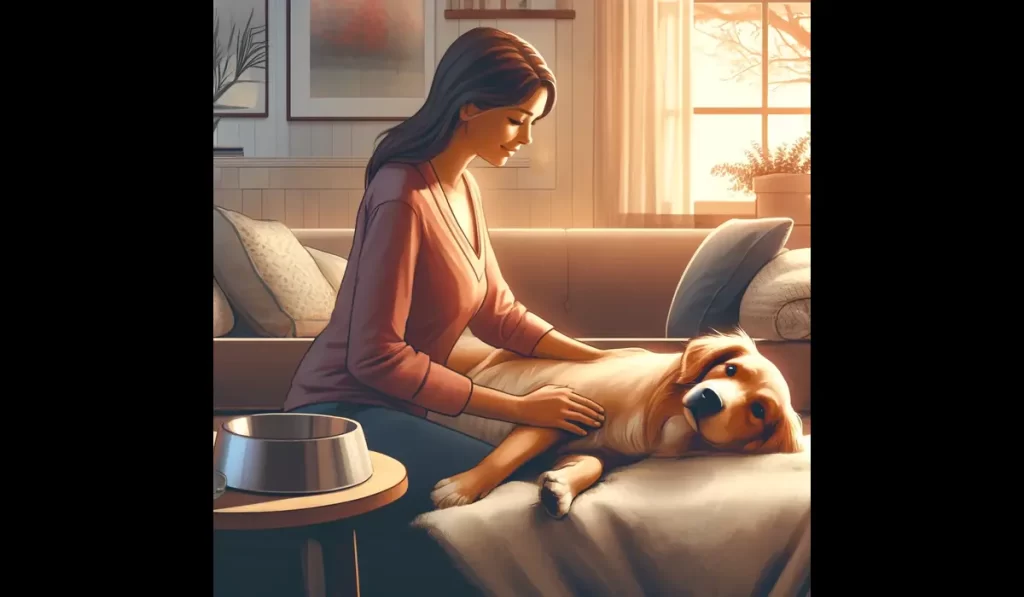When my friend’s French Bulldog, Bella, was pregnant in our Texas neighborhood, I helped prepare for her labor under the guidance of my vet, Dr. Carter. The experience was nerve-wracking but rewarding. This guide combines my observations with Dr. Carter’s expertise to help US dog owners in places like Miami or Colorado support their pregnant dogs safely. Inducing labor at home is risky and should only be attempted with veterinary supervision, but understanding the process can ensure a smooth delivery for your dog and her puppies.
When Does Dog Labor Occur?
Dr. Carter explains that a dog’s gestation period is 58–68 days, with most deliveries occurring naturally [1]. Key indicators include:
- Due Date: Determined by breeding date or vet ultrasound [1].
- Rectal Temperature Drop: Falls below 100°F (37.8°C) 12–24 hours before labor [2].
- Behavioral Changes: Nesting, restlessness, or panting [1].
Bella’s temperature dropped to 99°F, signaling labor within a day, Dr. Carter confirmed [1].
Signs of Impending Labor
Dr. Carter outlines signs to watch for [1][2]:
- Nesting behavior (e.g., digging in blankets or seeking a quiet spot) [1].
- Increased restlessness or pacing [2].
- Panting or mild contractions [1].
- Loss of appetite or vomiting [2].
Bella started nesting in a cozy corner, prompting us to set up a whelping box [1].
Stages of Dog Labor
Dr. Carter describes the three stages of labor [1][2]:
- Stage 1 (6–12 hours): Restlessness, nesting, and temperature drop; mild contractions begin [1].
- Stage 2 (1–24 hours): Active contractions with puppy delivery; rest periods of 30 minutes to 2 hours between puppies are normal [2].
- Stage 3: Expulsion of placentas after each puppy; count placentas to match puppies to avoid retained placenta issues [1].
Bella delivered six puppies over 8 hours, with Dr. Carter monitoring remotely [1].
How to Prepare for Your Dog’s Labor
Dr. Carter’s preparation tips [1][2]:
- Set Up a Whelping Box: Use a sturdy box (e.g., Petmate) with soft bedding (e.g., K&H Pet Products blankets) in a quiet, warm area [1].
- Gather Supplies: Thermometer (e.g., Vicks), clean towels, scissors, and dental floss for umbilical cords [2].
- Keep Vet Contacts Handy: Have VCA Hospitals or an emergency clinic’s number ready [1].
- Monitor Diet: Feed a high-quality diet (e.g., Hill’s Science Diet Puppy) to support energy needs [2].
We prepared Bella’s whelping box with clean towels and kept Dr. Carter on speed dial [1].
Can You Induce Dog Labor at Home?
Dr. Carter strongly advises against inducing labor at home without veterinary guidance, as it can harm the mother and puppies (e.g., uterine rupture, premature delivery) [1][2]. Safe methods, only under vet supervision, include:
- Gentle Walking:
- Short, calm walks (10–15 minutes) may encourage contractions [1].
- Avoid strenuous activity or crowded areas to reduce stress [2].
- Nipple Stimulation:
- Gentle massage of the nipples may stimulate oxytocin release [1].
- Stop if the dog shows discomfort [2].
- Calcium Supplements:
- Only administer (e.g., Tums) after the first puppy under vet direction to strengthen contractions [1].
- Incorrect use can cause complications [2].
Bella’s labor started naturally after a short walk, per Dr. Carter’s advice [1].
How to Assist During Labor
Dr. Carter’s tips for supporting your dog [1][2]:
- Stay Calm: Your presence reassures the dog [1].
- Monitor Timing: Note the start of Stage 1 and delivery intervals [2].
- Assist Puppies (If Needed):
- If the mother doesn’t, gently tear the amniotic sac with clean hands [1].
- Tie the umbilical cord with dental floss 1 inch from the puppy’s belly, then cut with sanitized scissors (e.g., Fiskars) [2].
- Wipe puppies with a clean towel until they breathe or cry [1].
- Count Placentas: Ensure the number matches the puppies to avoid infection [2].
We assisted one of Bella’s puppies when she was too tired to clean it, following Dr. Carter’s instructions [1].
Breed-Specific Labor Risks
This table outlines labor risks for select breeds, based on veterinary data [1][2].
| Breed | Labor Risk (1–10) | Considerations |
|---|---|---|
| French Bulldog | 8 | Brachycephalic, narrow pelvis |
| Cane Corso | 5 | Large puppies, risk of inertia |
| Labrador Retriever | 4 | Generally easier, monitor for size |
| Pug | 9 | High risk of dystocia, small pelvis |
Note: Risk (1–10) reflects difficulty; considerations guide preparation.
Complications During Labor
Dr. Carter highlights potential issues [1][2]:
- Dystocia: Difficulty delivering due to puppy size, position, or narrow pelvis [1].
- Uterine Inertia: Weak contractions preventing delivery [2].
- Retained Placenta: Can cause infection if not expelled [1].
- Abnormal Discharge: Green or bloody discharge before delivery may indicate distress [2].
Bella had mild inertia, resolved with vet-guided walking [1].
When to Call a Veterinarian
Dr. Carter advises immediate help if:
- Stage 1 exceeds 24 hours without delivery [1].
- Strong contractions last over 1 hour without a puppy [2].
- Rest periods exceed 2–3 hours between puppies [1].
- Dog shows distress, fever, or abnormal discharge [2].
- Puppies appear weak or unresponsive [1].
The ASPCA recommends VCA Hospitals or emergency clinics for urgent cases [3].
Things to Avoid During Labor
Dr. Carter warns against [1][2]:
- Inducing Without Vet Guidance: Risks harm to mother and puppies [1].
- Excessive Handling: Can stress the dog or disrupt labor [2].
- Ignoring Rest Periods: Normal pauses are 30 minutes to 2 hours; don’t assume delay [1].
- Untrained Assistance: Cutting cords or breaking sacs without training risks infection [2].
Post-Labor Care
Dr. Carter’s tips for mother and puppies [1][2]:
- Monitor the Mother: Ensure she eats, drinks, and rests; watch for fever or lethargy [1].
- Check Puppies: Confirm they’re nursing and active [2].
- Vet Check: Schedule a post-delivery exam to rule out retained placentas or infections [1].
- Nutrition: Feed the mother a high-energy diet (e.g., Hill’s Science Diet Puppy) [2].
Bella and her puppies thrived after a vet check, Dr. Carter notes [1].
FAQs
- Can I induce labor at home? Only with vet guidance; unsupervised induction is risky [1].
- How long is normal between puppies? 30 minutes to 2 hours; longer requires vet attention [2].
- What if my dog doesn’t clean the puppies? Gently assist with clean towels and sanitized tools [1].
Key Takeaways
- Monitor Signs: Temperature drop, nesting, and panting signal labor.
- Prepare Thoroughly: Set up a whelping box and keep vet contacts ready.
- Avoid Home Induction: Only use vet-approved methods like gentle walking.
- Seek Vet Help: Call for delays, distress, or complications.
Final Thoughts
Helping Bella through labor in our Texas neighborhood was intense, but Dr. Carter’s guidance ensured a safe delivery. These steps work for any US dog owner, from Miami to Colorado. Shop Petmate, Hill’s Science Diet, or Fiskars at Walmart or PetSmart, and consult your vet or an ASPCA-affiliated clinic to keep your dog and her puppies healthy.
References:
- VCA Hospitals, “Canine Labor and Delivery”.
- Rover, “Dog Pregnancy and Whelping”.
- ASPCA, “Pet Reproductive Health”.



